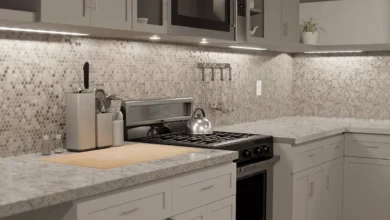Safety Tips for Electrical Maintenance
Working on electrical circuits or equipment involves a lot of risks. It is possible to repair the electrical circuits, but the person needs to take extreme care as there is a risk of electric shock. However, if one follows the rules to work on electrical circuits, he can repair a circuit safely without risk.
The rules are not easy, but some are highly complicated, as one needs to understand the complex circuits before working for electrical repairs and maintenance. Let us check some of the best safety tips for electrical maintenance.
Check the Power

The best way to work safely on electrical circuits is to check the power. You must check the power in electric wires and equipment before continuing any repair. Usually, people shut off the power from the circuit breaker and start working on electric circuits, but this may not be the safest method.
Even after shutting off the power you need to check the power as there are many wires in an electric box. Some may still be carrying current. You can use a small voltage tester to check the current in every wire before working on its repair.
Mislabeled Circuit Breakers
The old electrical installations may carry the mislabeled circuit breakers in a box. These circuit breakers do not precisely describe the wires which they control. Therefore you should not rely on old circuit breakers and installations. It is best to check the power in individual wires before working on them.
Check the Ratings of Devices
Every circuit and device has an ampere rating which represents the maximum amount to the current that it can handle without damage. Most of the electrical circuits in households are rated at 15 and 20 Ampere rating. The heavy load circuits made to operate large appliances are rated from 25 to 50 Amperes.
While installing or replacing a wire, you need to check its rating and use the correct rated wire. Moreover, when you need to replace a faulty switch, receptacle or fixture, you need to install the device that is rated correctly for the amperage carried by the circuit. Don’t install a high or low rated switch, receptacle or fixture in a circuit otherwise it may damage the circuit due to overheating.
Making the Connections
The electric current flows in a circuit through wires, metal contacts, and conductors that are joined through connections. It is essential to make the connections accurately to allow the proper flow of electric current. There are screws in every circuit and device to join and keep the electric wires in place. A loose screw or pin may lead to a loose connection. The loose connection restricts the flow of current that leads to friction and heat which may cause a fire in the circuit or device. Therefore it is essential to make the connections correctly and tightly to allow the proper flow of current.
Grounding and Polarization
Grounding or polarization is required for the safety of electrical systems, devices, and their users. Polarization ensures that the electric current travel from the live wires to the devices and returns from the neutral wires to the source. Proper grounding is done to allow the passage of stray electric current to pass to the ground, for the safety of users and electrical devices.
Always study the manufacturer’s wiring diagram before repairing any electrical appliance. It allows you to understand the circuit and flow of current and makes the repair or replacement convenient. You should understand your home grounding system to ensure the proper grounding or circuits and appliances.
Electrical enclosures

The electrical enclosures are meant for covering the circuits and wired for their protection and safety of users. The electrical boards in some states require you to enclose the wirings in a safe enclosure. The enclosures secure the electric wires from external elements as well as the users from electric shock. Covering the circuits and wires protects the people from accidentally touching the wires.
Take Professional help
You can perform the necessary repair of electrical circuits yourself. However, to work on complex circuits, you need professional help. Always contact a qualifies and licensed electrical to repair or install a circuit you don’t understand. You can easily find local electricians in or near your location. For example, if you live in the Wide Bay, you should search for the electrical contractors Wide Bay.
Taking help from a professional electrician saves time and cost in many ways. Moreover, you don’t need to understand the complex circuits or take any risk of electrical shock.
Final Words
These are some basic tips to work on electrical installations in a household. However, nobody can entirely rely on these tips to work safely on any electrical circuit or equipment. Always check the power in individual wires and metal contacts and wear insulating gloves before working on electric circuits.




